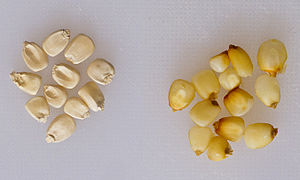 Optimization Theory for Large Systems
Optimization Theory for Large Systems by
Leon S. Lasdon My rating:
5 of 5 stars The text contains 523 pages, and is at a graduate level. This book was awarded honorable mention in the 1970 Lanchester Prize competition for the year's best publication in Operations Research. A Japanese Edition appeared in early 1973, and Russian and Romanian translations appeared in 1976. A reprint by Dover Publications Inc., Mineola, N.Y., appeared in 2002.
Dantzig wrote in the 1991 history book, "it is interesting to note that the original problem that started my research is still outstanding -- namely the problem of planning or scheduling dynamically over time, particularly planning dynamically under uncertainty. If such a problem could be successfully solved it could eventually through better planning contribute to the well-being and stability of the world."
...The nature of that original problem is also detailed in the book. Dantzig's contributions, he explained, grew out of his experience in the Pentagon during World War II, when he had become an expert on programming -- planning methods done with desk calculators. In 1946, as mathematical adviser to the U.S. Air Force Comptroller, he was challenged by his Pentagon colleagues to see what he could do to mechanize the planning process, "to more rapidly compute a time-staged deployment, training and logistical supply program." In those pre-electronic computer days, mechanization meant using analog devices or punch-card machines. ("Program" at that time was a military term that referred not to the instruction used by a computer to solve problems, which were then called "codes," but rather to plans or proposed schedules for training, logistical supply, or deployment of combat units. The somewhat confusing name "linear programming," Dantzig explained in the book, is based on this military definition of "program.")
The large-scale "activity analysis" model he developed, Dantzig said, would be described today as a time-staged dynamic linear program with a staircase matrix structure. In those days, he explained, "There was no objective function" [italics his]. Lacking the power of electronic computers, practical planners at the time had no way to implement such a concept. In fact, summarizing his contributions to linear programming, Dantzig listed the substitution of an explicit objective function for a set of ad hoc rules, along with two others -- the recognition that practical planning relations could be reformulated as a system of linear inequalities and the invention of the simplex method.
As viewed by his colleagues, the list of Dantzig's professional accomplishments extends beyond linear programming and the simplex method to decomposition theory, sensitivity analysis, complementary pivot methods, large-scale optimization, nonlinear programming, and programming under uncertainty. His research in linear programming (and the related areas of nonlinear optimization, integer programming, and optimization under uncertainty) has had a fundamental impact on the consequential development of operations research as a discipline. Inasmuch as operations research is defined by the use of analytic tools to improve decision-making, operations research as a discipline could not exist without the use of formal optimization models as mental constructs, and the actual solution of models in a practical setting.
Dantzig is so well known to the optimization community that in 1991, when the editors of the SIAM Journal on Optimization decided to dedicate the first issue to him, they needed very few words: "The first issue of the SIAM Journal on Optimization is dedicated to George Dantzig who has been so influential in the development of optimization."
...and I suppose to all of us, one of the most startling developments of all time has been the penetration of the computer into almost every phase of human activity. Before a computer can be intelligently used, a model must be formulated and good algorithms developed. To build a model, however, requires the axiomatization of a subject matter field. In time this axiomatization gives rise to a whole new mathematical discipline which is then studied for its own sake. Thus, with each new penetration of the computer, a new science is born.
Operational Research.
View all my reviews




































